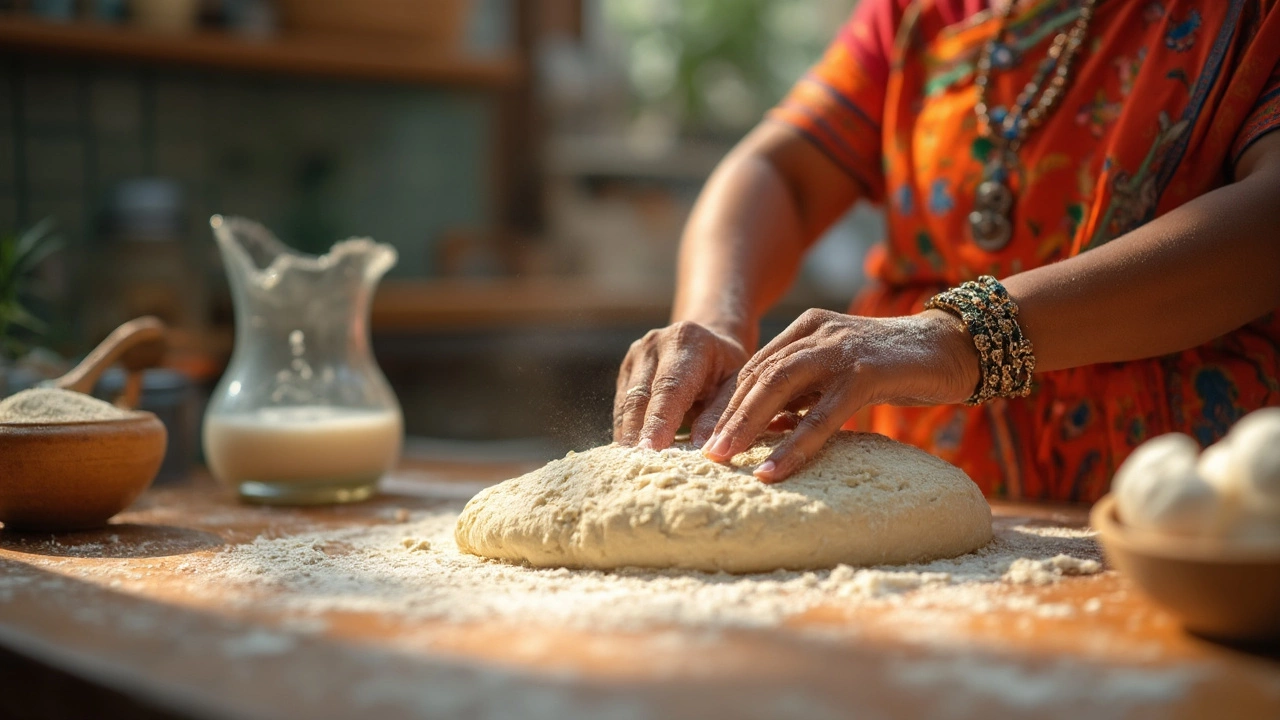Hard Roti: How to Fix and Keep It Soft
When dealing with hard roti, a flat Indian bread that turns dry or crunchy after cooking. Also known as hard chapati, most cooks end up with a tough bite because of low moisture, over‑cooking, or a stiff dough. The opposite is soft roti, the fluffy, pliable version that stays tender even after cooling. Some kitchens add baking soda, a tiny alkaline boost that lightens the crumb or mix in oil, to increase dough flexibility and moisture retention. Understanding how these factors link together helps you turn a hard roti into a soft, pull‑apart delight. hard roti doesn’t have to stay crunchy if you follow a few simple steps.
Why Roti Gets Hard and What to Do About It
Hard roti usually results from three main issues: insufficient water in the flour, skipping the resting period, and cooking at too high a temperature. When the dough lacks hydration, gluten strands tighten, making the bread rigid. Skipping rest means the flour can’t fully absorb water, so the dough stays stiff. Finally, a scorching pan seals the outside too fast, preventing steam from puffing the interior. Fix each cause and you’ll see a direct improvement – a clear semantic triple: hard roti → results from → low hydration; hard roti → improves with → dough resting; hard roti → benefits from → moderate heat.
Start by measuring water accurately – about 60‑70% of the flour weight is a good rule. Mix until the dough feels soft but not sticky, then let it rest for at least 20‑30 minutes, covered with a damp cloth. Resting relaxes gluten, allowing the dough to stretch easily when you roll it. This step connects the entities: dough hydration → enables → soft roti; dough resting → reduces → hardness.
When it’s time to cook, preheat the tawa (griddle) to medium‑high, not blazing hot. Place the rolled roti, watch for small bubbles, then flip. The second side should cook just long enough to brown lightly; over‑cooking on either side dries the surface and makes it hard. Using a lid for the last few seconds traps steam, which adds moisture from inside, helping the roti stay soft. Here we see a triple: moderate heat → creates → proper puff; steam → adds → moisture, preventing hardness.
If you still end up with a hard roti, consider a tiny pinch of baking soda or a drizzle of oil in the dough. Baking soda creates tiny air pockets during cooking, while oil coats the gluten strands, keeping them supple. Both methods should be used sparingly – too much soda can give a bitter taste, and excess oil makes the roti greasy. The relationship is straightforward: baking soda → lightens → crumb; oil → lubricates → gluten, both leading to softer results.
Another common fix is to store roti properly. Wrap fresh rotis in a clean kitchen towel and place them in an insulated container. The trapped steam keeps them from drying out. If you’ve already made a batch that’s turned hard, a quick rescue is to sprinkle a few drops of water on the roti, cover it with a damp towel, and warm it on a low flame for a minute. The added moisture re‑hydrates the surface, turning a crusty bite into a pleasant chew.
All these tips – correct water ratio, resting time, cooking heat, optional soda or oil, and proper storage – form a complete toolkit for turning hard roti into the soft, flexible flatbread you expect. Below you’ll find articles that dive deeper into each of these areas, from why roti doesn’t puff to the science behind baking soda in roti dough, giving you actionable insights to master the perfect roti every time.

Why Does Roti Get Hard After Cooking? Simple Fixes That Work
Roti can go from soft to tough pretty quickly, and it's not just luck—technique matters. This article digs into why rotis often turn hard after cooking and how to keep them soft every time. From dough texture and resting times to rolling skills and cooking tricks, you'll find clear reasons and down-to-earth solutions. Common myths will get debunked with actual practical advice. If you want your rotis to be soft and fluffy, this is a must-read.